- HOME
- Destination
- Adventure Activities
- About Us
- BLOGS
- CONTACT US

In Nepal there are 12 National Parks for the protection, preservation,and promotion of the wildlife and the vegetation. Let us look at all the National Parks of Nepal.
Shivapuri Nagarjun National Park was established in 2002,and it is named after the Shivapuri Peal (2,732 meters). The park covers the area of 159 km2 and is located in the mid-hills of northern fringe of the Kathmandu valley.
The vegetation of park comprises chir pine, oak, rhododendron, wild Himalayan cherry, ring-cupped oak, and others. There are also many varieties of plants which has medicinal uses. Overall there are 2,122 species of flora and 129 species of mushrooms. Clouded leopard, leopard cat, jungle cat, golden jacket, wild boar, Himalayan goral are some of the wildlife of the park. Also, there are 318 species of birds.

Shivapuri Nagarjun National Park
Established in 2010, Banke National Park is in the mid-western region of Nepal. The park covers the total area of 550 km2. The park is also neighbor to Bardiya National Park, and together they represent the Tiger Conservation Unit (TCU) Bardia-Banke.
Banke National Park is home to wildlife including tiger, four-horned antelope,and ruddy mongoose. The vegetation of the park has 113 species of trees, 107 species of herbal and 85 shrub and climber species.
Bardia National Park was established in 1988 as Royal Bardia National park. In 1988, the park was declared as a National Park. The park covers the area of 968 km2 and it is also the largest and most undistributed national park of Terai region of Nepal.
Together with Banke National Park, it represents the Tiger Conservation Unit (TCU) Bardia-Banka. There are 53 species of mammals including wild elephant, Bengal tiger, rhinoceros, and swamp deer. There are also 23 species of reptile and amphibian including mugger crocodiles. The vegetation of the park is the balance mixture of grasslands, savannah,and riverine forest. In total there are 839 species of flora.
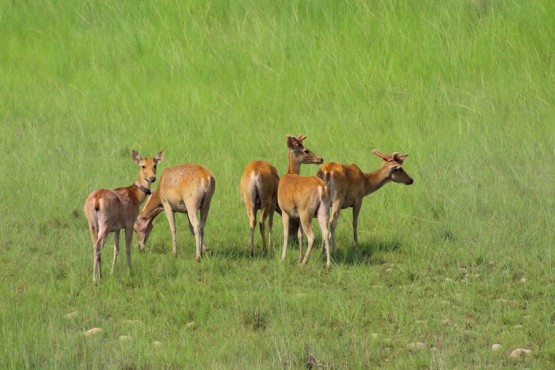
Bardia National Park
It is the first national park in Nepal, which was established in the year 1973. The park was also listed in the World Heritage Site in 1984. Located in the subtropical inner Terai lowlands, it covers the area of 952.63 km2.
In Chitwan National Park, there are 700 species of wildlife including the rare animals like one-horn rhinos and Bengal tiger. There are 543 species of birds, 68 species of mammals and 17 species of snakes, starred tortoise and monitor lizards. The vegetation of the park consists of rosewood, beleric, elephant apple and so on. The park also has the world tallest grass species.

Chitwan National Park
Langtang National Park was established in the year 1976 as the first Himalayan national park. It is one of the popular national parks of Nepal, as the Gosaikunda lake is within the park. The lake is a very popular tourist site of Nepal. The park has 14 vegetation types in 18 eco system types. Oak, chir pine, hemlock, maple fir are some of the vegetation of the park. The park is also famous for musk deer and red panda.
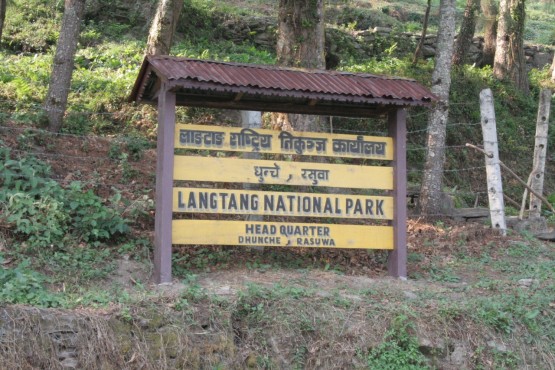
Langtang National Park
Khaptad National Park was established in 1984,and it covers the area of 225 km2. The park ranges from the elevation of 1,400 meters to 3,300 meters and its landscape consist of moorland, steep slopes,and streams. There are 567 species of flora including chir pine, rhododendron, oak, Himalayan fir, hemlock and so on. The park is inhabited by a leopard, wild dog, musk deer, Himalayan black bear, and other wildlife. In total there are 23 mammals, 287 species of birds and 23 amphibians and reptiles.
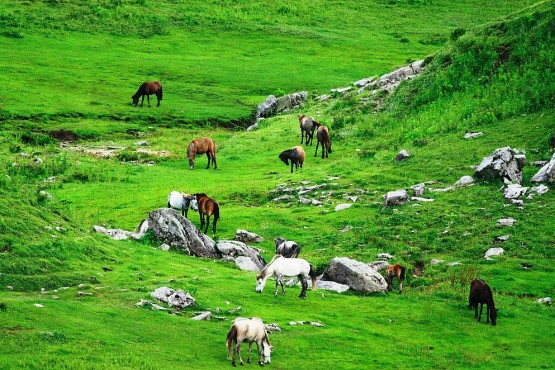
Khaptad National Park
Makalu Barun National Park was established in 1992, and it covers the area of 1,500 km2. It is the only protected in the world with an elevation gain of more than 8,000 meters enclosing tropical forest as well as snow-capped peaks. The park covers several mountains including the fifth tallest mountain of the world, Mount Makalu (8,463 meters).
The vegetation of the park comprises juniper, dwarf rhododendron, rhododendron, aromatic herbs,and others. There are 3,128 species of flowering plants in the park. Red panda, red fox, black bear, wild boar, Himalayan wolf, golden wolf, snow leopard, musk deer are some of the wildlife of the park. As per the recorded data, there are 88 species of mammals, 315 species of butterflies, 43 species of reptiles, 16 species of amphibians, 440 species of birds and 78 species of fish.
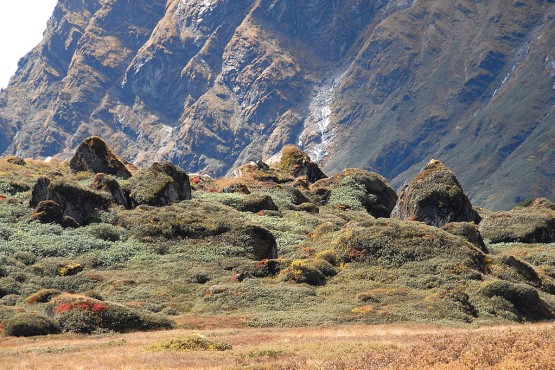
Makalu Barun National Park
Parsa National Park was established as a wildlife reserve in 1984, but in 2017, it was declared a national park of Nepal. The park covers the area of 128 km2 and is adjacent to Chitwan National Park in the west. The vegetation of the park includes sissoo, silk cotton trees, chir pine, khair and sabai grass. Bengal tigers and gaurs are the popular wildlife of this park.
Suklaphanta National Park was established as Royal Suklaphanta Wildlife reserve in 1976 and in 2017 it was gazetted as Suklaphanta National Park. The park covers the area of 305 km2 of open grassland, forests, riverbeds, and tropical wetlands. There are around 700 species of flora in the park. Also, there are 423 species of birds, 46 species of mammals, 28 species of fish and 12 reptile and amphibian species. Bengal tiger, swamp deer, Indian leopard, elephant, great one-horned rhino are some of the wildlife of the park.
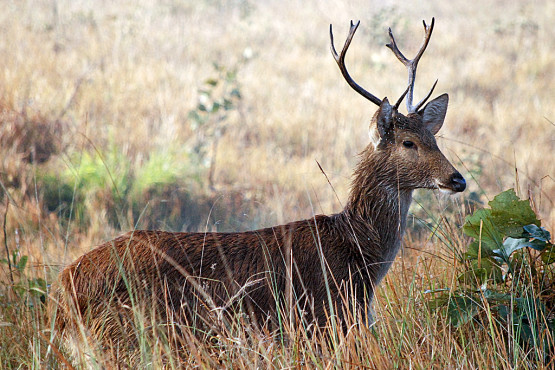
The Barasingha-Suklaphanta National Park
Sagarmatha National Park was established in 1976 and it the first national park of Nepal which was as the World Heritage Site in 1979. The park covers the area of 1,148 km2 and is dominated by the tallest mountain of the world, Mount Everest. It is also adjacent to the Makalu Barun National Park in the east side.
The vegetation of the park includes rhododendron, juniper, firs, bamboo, blue pines, linches, and mosses. Musk deer, snow leopard, Himalayan black bear, red panda, martens, Himalayan wolves, Himalayan thars are some of the wildlife of the park. Also, there are 118 species of birds in the park.
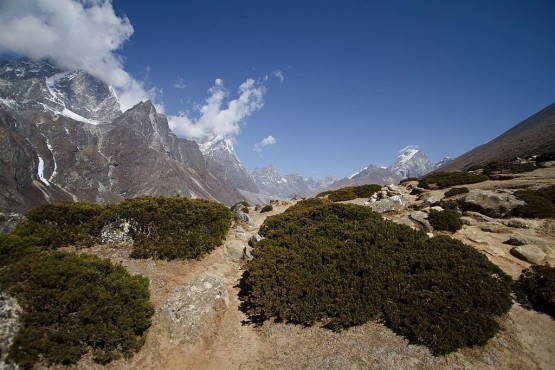
Sagarmatha National park
Rara National Park was established in 1976, and it is the smallest national park in Nepal. The park covers the area of 106 km2 and its main attraction is the Rara Lake. The park was established with the aim of protecting the unique flora and fauna of the Humla-Jumla region. The vegetation of the park is characterized by rhododendron, fir, blue pine, spruce, black juniper, Himalayan cypress, brown pal, and others. In total there are 1,070 species of flora. There are 241 species, 51 species of mammals, three species of fish and two species of reptiles and amphibians in the park.
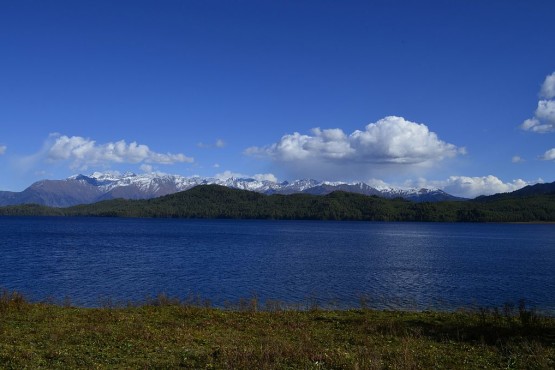
Rara Lake-Rara National Park
Covering the area of 3,555 km2, Shey Phuksundo National Park is the largest national park of Nepal. It is also the only trans-Himalayan national park of Nepal. Shey Phuksundo Lake of this park is one of its main attraction. Salix, juniper, rhododendron, hemlock, cedar, poplar, bamboo, spruce are some of the vegetation of the park. There are 286 species of plant with ethno botanical importance. Some of the endangered animals like snow leopard, grey wolf, blue sheep,and musk deer are the inhabitants of the park. There are over 200 species of birds, 29 species of butterfly including the highest flying butterfly in the world, Paralasanepalaica and six species of reptiles.
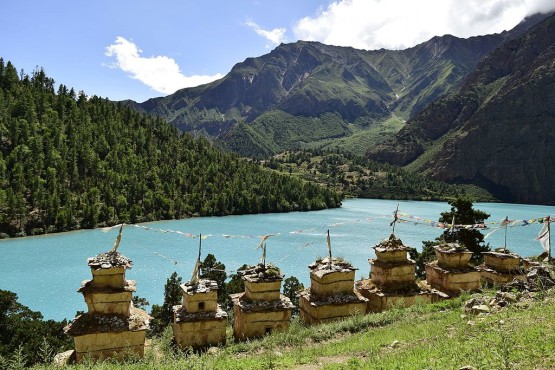
Shey Phuksundo Lake
Your email address will not be published.Required fields are marked *
You must be logged in to post a comment.
0 Comments on "12 National Parks of Nepal you should know about"